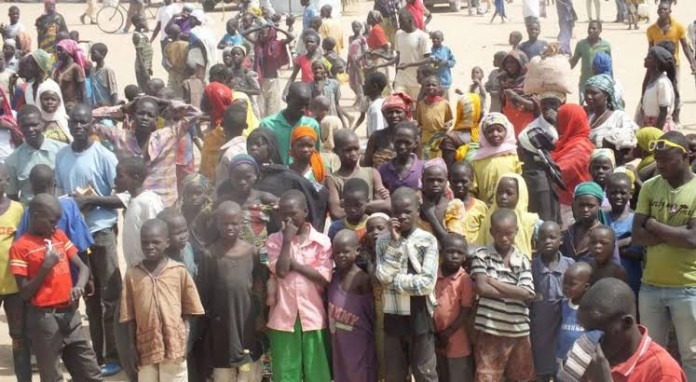By Faith Maji, Katsina
A report by Save the Children International (SCI) suggests that about 15.6 million children in Nigeria may face hunger in the lead up to the lean season starting in June.
According to the report, the number of hungry children is 25 per cent higher than that of the same period in 2023, and is likely the result of increasing insecurity, protracted conflicts, banditry and rising food prices in the West African country.
Save the Children explains that the figures are sourced from the Cadre Harmonisé, a regional framework to identify food and nutrition insecurity in the Sahel and West Africa. Almost 32 million people in Nigeria, including 15.6 million children will face crisis levels of hunger between June and August unless food and cash assistance become available.
Violent killings, attacks and kidnappings by non-state armed groups and bandits in the country’s north have affected food production, disrupted local markets and caused farmers to flee their farms, the report says.
According to the Association of Nigerian Farmers, so far this year at least 165 farmers across Nigeria have been killed, mostly in Benue in the country’s north-central region which the UN has indicated is an emerging hotspot for farmer and herder conflict.
According to the Save the Children’s Country Director for Nigeria, Duncan Harvey, “an already dire hunger situation in the country is gradually going from bad to worse as violence, insecurity and rising prices combine to leave over 15 million children hungry in Nigeria. Hunger exists nationwide, but the situation in the north where violence is rife is particularly dire. In Borno, Yobe, Katsina and Zamfara, one in three children do not know where their next meal will come from.
“Children in Nigeria – who make up one of the largest child populations in the world – have already endured far too much, as millions face conflict, violence and exploitation. This year one in six children will go hungry, an increase from last year. Urgent action must be taken to prioritise the needs of children to stop this devastating trend and protect innocent lives. If not, armed groups will continue to carry out brutal attacks, drive up food prices, and push more families to starvation.”
Under the IPC scale, Phase 3 is a crisis, Phase 4 is an emergency, and Phase 5 is used for when the situation is reaching famine-like conditions — the worst scenario categorised by starvation, death, and extremely critical acute malnutrition levels. At least 490,000 children – mostly in Borno and Katsina – are expected to face catastrophic levels of hunger (classed as IPC4). Hunger has risen sharply in Nigeria in recent years, up from about 7% of the population analysed by the UN in 2020 to 15% currently.
Bula Saidu (aged 12) lives in Konduga in Borno with his parents and siblings and is the second youngest of twelve children. Bula said: “eating is very difficult in my house. We eat once daily – I cannot remember the last time we had three square meals. After eating once, I grow so hungry, but there is no food to eat… I feel so weak and sick most times.”







